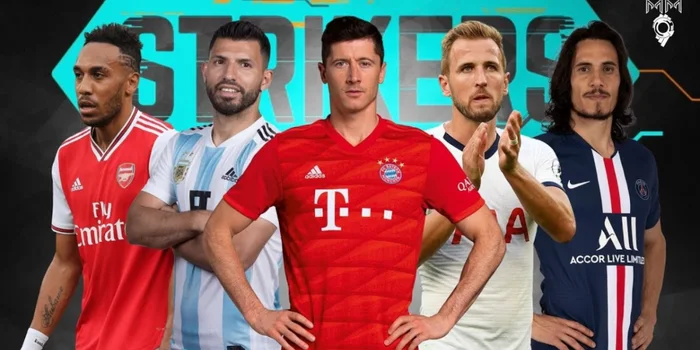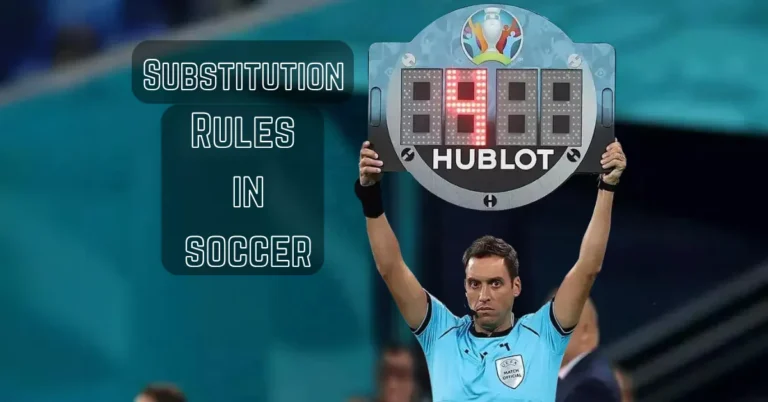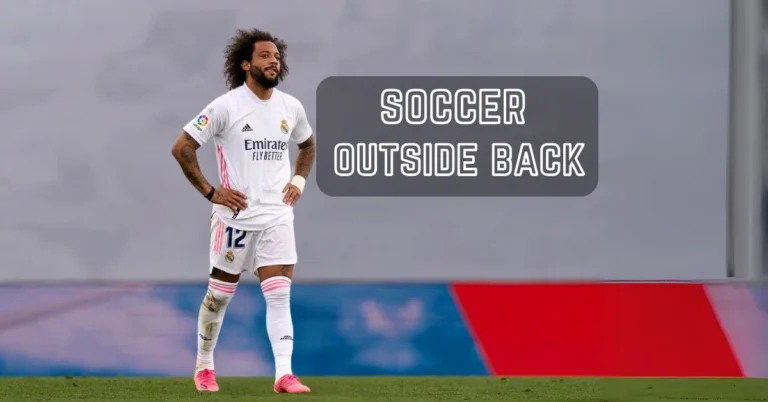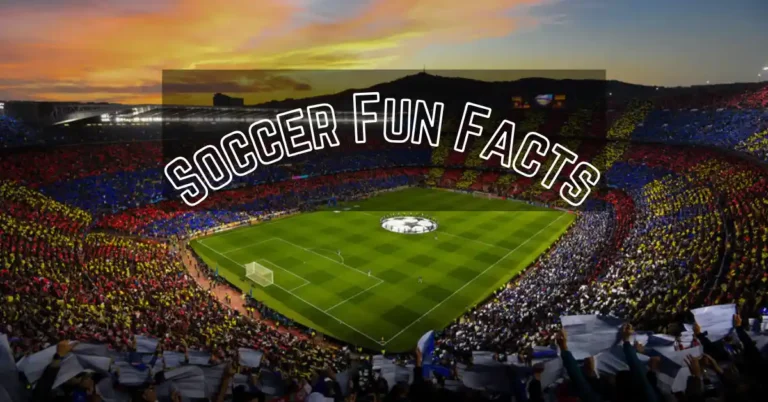Striker Soccer – What Is The Position And Role Of Striker?
Soccer teams are divided into many roles, each individual performing a unique role. The Striker position is very important in soccer. Striker soccer is like the heartbeat of a beautiful game. It’s not just about scoring goals; it’s an art. Their primary role is goal-scoring, strikers may also contribute defensively and play a part in creating goal-scoring opportunities for their teammates.
What Is Striker Soccer?

A soccer striker is a position in the sport of soccer. The striker is a forward player whose primary responsibility is to score goals. The primary role of a striker is to score goals. Strikers are expected to be effective finishers, capable of converting goal-scoring opportunities into successful outcomes.
Difference Between Striker and Central Forward
- A striker typically plays in a more advanced position, closer to the opponent’s goal, often as the primary goal-scoring threat. They tend to operate in a central or slightly wider role.
- A central forward, on the other hand, may have a more versatile role, often involving both goal-scoring and linking-up play. They may play in a central position but could drop deeper to contribute to build-up play.
Similarities Between Striker and Central Forward
Both strikers and central forwards share the common objective of scoring goals. Both positions play key offensive roles in their teams, aiming to lead the attacking efforts and contribute significantly to the team’s goal tally.
position of striker soccer

In soccer, the position of a striker is typically located at the forefront of the attacking formation. Strikers play near the opposing team’s goal and are often the primary goal-scoring players on the team. They may be positioned centrally or slightly to the left or right, depending on the team’s tactics.
Strikers usually play near the other team’s goal and finish well. Strikers’ ability to score goals typically determines a soccer team’s success. They must be agile, have good ball control, and understand positioning to be effective.
role of striker soccer

Strikers are primarily responsible for scoring goals, but they may also make contributions defensively and help their teammates create opportunities for them to score goals.
Attacking role
The attacking role of a striker in soccer involves a set of responsibilities geared towards scoring goals and contributing to the team’s offensive play. Here are key aspects of the attacking role for a striker.
Goal Scoring:
The primary objective of a striker is to score goals. Strikers need to be proficient finishers, capable of scoring with both feet, headers, and other goal-scoring techniques.
Movement and Positioning:
Strikers use intelligent movement and positioning to create goal-scoring opportunities. This includes making runs behind the defensive line, finding spaces in the box, and pulling defenders out of position.
Creating Space:
Strikers contribute to creating space for themselves and their teammates by making runs that stretch the opposing defense. This strategic movement can open up opportunities for shots on goal or create openings for other attacking players.
Pressing in Attack:
In addition to defensive pressing, strikers engage in pressing the opponent’s defensive line to force mistakes and capitalize on turnovers in advanced positions.
Finishing Skills:
Strikers must possess a variety of finishing skills, including one-on-one situations with the goalkeeper, volleys, and quick reactions in the box. Precision and composure are essential in converting goal-scoring chances.
Counterattacking:
Strikers play a crucial role in counterattacking situations, utilizing their speed and goal-scoring instincts to exploit spaces left by the opposing team when transitioning from defense to offense.
defensive role

The defensive role of a striker in soccer involves various responsibilities aimed at disrupting the opponent’s play and supporting the team defensively. Here are key aspects of the defensive role for a striker.
Pressing Opponents:
Strikers actively engage in pressing the opposition by putting pressure on defenders and midfielders when they are in possession. This pressing can force mistakes, interceptions, or turnovers in advanced positions.
Closing Down Space:
Strikers work to limit the space available for opposing players to operate. By closing down passing lanes and pressing opponents quickly, they contribute to defensive compactness and disrupt the opponent’s build-up play.
Harassing Defenders:
Strikers harass and hassle defenders, making it challenging for them to make accurate passes or decisions. This aggressive approach can lead to defensive errors and turnovers.
Tracking Back:
While their primary role is in the attacking third, strikers may track back to provide defensive support when the team is not in possession. This includes helping out in midfield and putting pressure on opponents in their own half.
Defensive Headers and Clearances:
Strikers may need to defend set-pieces and opposition clearances by winning defensive headers or making clearances. This is particularly important during the defensive phases of the game.
Cutting Passing Lanes:
Strikers strategically position themselves to cut off passing lanes and limit the options available to opposing players. By doing so, they disrupt the flow of the opponent’s attacks.
Transition Defense:
Strikers play a role in initiating defensive actions during transitions from attack to defense. This includes quickly reacting to the loss of possession and applying pressure to regain control.
See Also: How Long Does A High School Soccer Game Last?
essential Things A Striker Should Have

That person has these traits if they want to play as a shooter.
Shooting Ability:
A proficient striker possesses a lethal shooting ability, being able to strike the ball accurately and with power using various techniques such as volleys, half-volleys, and shots from different angles. They showcase precision and consistency in front of goal, converting goal-scoring opportunities into successful finishes.
Composure:
Composure is a crucial trait for a striker, especially in high-pressure situations. A top-notch striker remains calm and collected when facing goalkeepers or defenders, ensuring that they make well-calculated decisions during critical moments. This composure contributes significantly to their goal-scoring efficiency.
Hold-Up Play:
Strikers with strong hold-up play skills can control and retain possession of the ball, even under defensive pressure. This ability allows them to link up with teammates, bring others into play, and create goal-scoring opportunities. A skilled striker can shield the ball effectively, waiting for support or creating space for others.
Technical Skill:
Technical proficiency is vital for a striker, encompassing a range of skills such as ball control, dribbling, and passing. A technically adept striker can manipulate the ball skillfully, navigate through tight defenses, and contribute to build-up play. These skills enhance their overall effectiveness on the field.
Intelligent Movement:
Intelligent movement is a hallmark of a successful striker. This involves the ability to read the game, exploit spaces, and make well-timed runs to receive passes or create goal-scoring opportunities. A striker’s understanding of the game’s dynamics allows them to position themselves strategically, making it challenging for defenders to mark them effectively.
See Also: Soccer Rondo
5 best tips for strikers

Below you will find the five most effective suggestions that will assist you in increasing your strength so that you can play as a striker in football.
Sharp Shooting Technique
- Focus on your shooting technique to ensure accuracy and power. Practice different types of shots, such as volleys, chip shots, and low drives.
- Work on your first touch to set up shots quickly, giving defenders less time to react.
Positional Awareness
- Constantly analyze the positioning of defenders and goalkeepers to find gaps in the defense.
- Make intelligent runs, utilizing both diagonal and vertical movements, to create goal-scoring opportunities.
Physical Conditioning
- Enhance your speed, agility, and strength through targeted exercises to outpace defenders and withstand physical challenges.
- Develop endurance for sustained high-intensity sprints throughout the game.
Decision Making Under Pressure
- Practice quick decision-making in tight situations. Anticipate the movement of defenders and goalkeepers to choose the most effective option.
- Improve your awareness of teammates’ positions to execute successful combination plays.
Mental Toughness and Confidence
- Cultivate a strong mental attitude to stay focused, even in high-pressure situations.
- Learn from missed opportunities and maintain confidence in your abilities. A resilient mindset is crucial for a striker.
See Also: How Long Is A Youth Soccer Game?
The Best Strikers in Recent World
Robert Lewandowski

The Polish powerhouse, playing for Bayern Munich, is renowned for his clinical finishing and exceptional goal-scoring ability. His precise positioning and physical prowess make him a constant threat to opposing defenses.
Erling Haaland

The young Norwegian sensation, leading the line for Borussia Dortmund, has taken the football world by storm with his explosive speed, strength, and clinical finishing. Haaland’s goal-scoring consistency marks him as one of the most promising strikers in the game.
Karim Benzema

Real Madrid’s seasoned striker, Benzema’s intelligent movement and link-up play make him a crucial asset for his team. Known for his ability to score crucial goals, he continues to be a key figure in the footballing elite.
Harry Kane

Tottenham Hotspur’s talisman, Kane combines deadly finishing with exceptional playmaking skills. His vision and goal-scoring prowess make him a complete striker, consistently ranking among the top goal-scorers in both domestic and international competitions.
Kylian Mbappe

The electrifying French forward, gracing the front line for Paris Saint-Germain, epitomizes speed and skill. Mbappe’s dazzling runs, clinical finishing, and ability to perform on the grandest stages have firmly established him as one of the world’s best strikers, with a future destined for greatness.
the best strikers of all time
Pelé (Brazil)

The “King” himself. Three World Cups, dazzling footwork, and a record-setting 643 goals for Santos alone. A global icon whose name echoes through football history.
Cristiano Ronaldo (Portugal)

A machine of power and precision. Five Ballon d’Or awards, record-breaking Champions League goals, and a relentless hunger for the net. His aerial prowess and clinical finishing are unmatched.
Lionel Messi (Argentina)

The magician with the left foot. Seven Ballon d’Or awards, weaving past defenders with mesmerizing dribbling, and scoring goals that defy description. His playmaking and vision redefine the striker role.
Gerd Müller (Germany)

Gerd Muller the “Bomber” from Bavaria. A poacher extraordinaire, his first touch and predatory instincts turned half-chances into gold. Two World Cups and seven Bundesliga titles with Bayern Munich solidify his legend.
Ronaldo Nazário (Brazil)

The original “Fenômeno.” Skillful, explosive, and unstoppable at his peak. His dribbling, creativity, and finishing power made him a nightmare for defenders, leaving a trail of awe and shattered records.
FAQs
A striker in soccer is a player primarily responsible for scoring goals, positioned near the opponent’s goal.
The terms “center forward” and “striker” are often used interchangeably, with both roles focusing on goal-scoring, but a center forward may play a more central attacking role.
The number top strikers in 2024 are Cristiano Ronaldo, Haland, Mbappe and Herry Kane.
The role of an attacker in football involves creating goal-scoring opportunities, making strategic runs, and contributing to offensive plays to break down the opposing team’s defense.
conclusion
The process of becoming a formidable striker is an ongoing journey that requires the development of skills, the ability to think strategically, and mental strong willpower. Striker soccer is about more than just scoring goals; it’s about having an impact on the outcome of a match and leaving an indelible mark on the football game that is considered to be beautiful.







